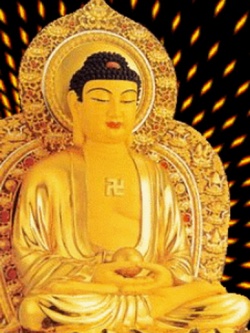''A spiritual community is not a group. It is a free association of individuals''
This quote from Sangharakshita’s What is the Sangha? expresses its central message. But what does it mean to be an individual? And how are we to sustain, indeed develop, our individuality, and at the same time live in cooperation and harmony with others? Here I explore these questions, with Sangharakshita as our guide.
Sangharakshita begins his discussion of the Sangha by stating that a spiritual community is not a group. But what differentiates a group from a spiritual community? According to Sangharakshita’s understanding, a group is what happens when non-individuals organize themselves together. Groups are powerful organizations which fear individuality
and always tend to discourage it. In contrast, Sangharakshita explains, ‘The spiritual community encourages freedom of thought. But this is not all. The defining principle of the spiritual community, as opposed to the group’s insistence on conformity, is more than simply freedom of thought, important as that freedom may be. It is freedom to grow.’
In order to understand what the Sangha really means, we must therefore first understand what it means to be an individual, and one aspect of Sangharakshita’s definition of the individual is someone who is prepared to grow and change; someone who is willing to let go of any fixed idea of themselves. A true individual, in Sangharakshita’s view, is someone who commits themselves wholeheartedly to the process of individual development.
So what does the process of individual development involve? Firstly, we must leave the group. We may, like the Buddha, do this quite literally and physically walk away from the family home, the society in which we were born. Or we may cut our
ties with the group more metaphorically and refuse to be pressured into conformity through our behaviour. An individual, Sangharakshita explains, is by nature spontaneous and free. ‘You do not require the approval of the group for your own piece of mind. You don’t mind differing from other people. You are autonomous, you make your own choices.’
However, the project of individual development does not happen in isolation from others. ‘The final characteristic of the individual’, Sangharakshita claims, ‘is that you encourage others to be individuals in their own way’. This means
being in personal, regular, and substantial contact with others who are trying to develop as individuals; ‘It means being able to enjoy, and seeking out, not just the psychological warmth of the herd, but the challenge of real communication, genuine spiritual exchange.’
The Sangha is essential to the Buddhist path, then, because personal relationships are essential for human development. To be human is to be related to other human beings and ‘the Buddhist life can only be fully lived in the light of the realization of our interconnectedness with all life, and the commitment to act with compassion and vigour on that basis.’
Notice Sangharakshita’s emphasis on our connection, not only with those in our immediate Sangha or our local Buddhist community but with all life. The Sangha is not a self-serving institution but one which must consistently engage with the outside world to ensure that the conditions in which we all live are conducive to the development of our
own individual (and infinite) potential. What is the Sangha? touches on many aspects of spiritual community – its place in human history, the traditional Sangha in Buddhist Asia, how to be a Buddhist parent, the place of the teacher – but it is the theme of self-development in association with others that Sangharakshita keeps returning to. Ultimately, ‘this is what the Sangha is really for’, Sangharakshita writes; ‘this is what the Sangha really is’.

